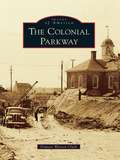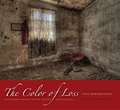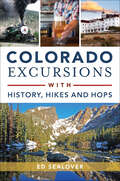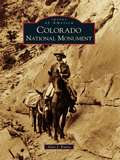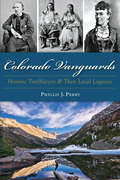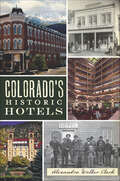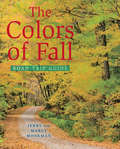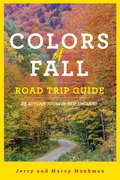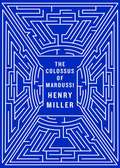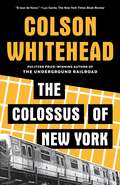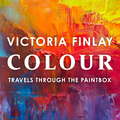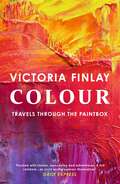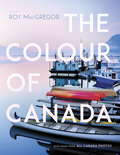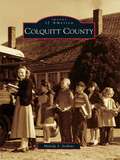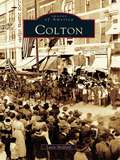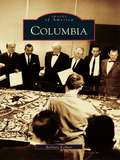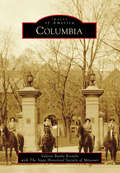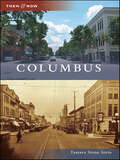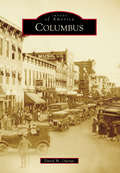- Table View
- List View
Colonial Parkway, The (Images of America)
by Frances Watson ClarkThe Colonial Parkway is a living timeline to the critical beginnings of our nation. Connecting a historic triangle of cities, the parkway winds along the James River overlooking Jamestown Island, where the first permanent English colony was established; through Williamsburg, the Colonial seat of government for the new country; and arrives in Yorktown, where the fledgling nation won independence from the British at the end of the Revolutionary War. The vision of the early directors of the U.S. National Park Service became the foundation for getting the approval to construct a road that would allow visitors to move from one historic place to the next without the disruptions of the modern world. Construction began in the early 1930s, and the final phase was finished in 1957 for the 350th anniversary of the founding of Jamestown. While the parkway is a marvel in engineering, the area it covers also serves as a recreational locale for biking, fishing, and hiking.
The Color of Loss
by Dan BurkholderThe devastation of New Orleans after Hurricane Katrina has been imprinted in our collective visual memory by thousands of images in the media and books of dramatic photographs by Robert Polidori, Larry Towell, Chris Jordan, Debbie Fleming Caffrey, and others. New Orleanians want the world to see and respond to the destruction of their city and the suffering of its people-and yet so many images of so much destruction threaten a visual and emotional overload that would tempt us to avert our eyes and become numb. In The Color of Loss, Dan Burkholder presents a powerful new way of seeing the ravaged homes, churches, schools, and businesses of New Orleans. Using an innovative digital photographic technology called high dynamic range (HDR) imaging, in which multiple exposures are artistically blended to bring out details in the shadows and highlights that would be hidden in conventional photographs, he creates images that are almost like paintings in their richness of color and profusion of detail. Far more intense and poetic than purely documentary photographs, Burkholder's images lure viewers to linger over the artifacts of people's lives-a child's red wagon abandoned in a mud-caked room, a molding picture of Jesus-to fully understand the havoc thrust upon the people of New Orleans. In the deserted, sinisterly beautiful rooms of The Color of Loss, we see how much of the splendor and texture of New Orleans washed away in the flood. This is the hidden truth of Katrina that Dan Burkholder has revealed.
Colorado Excursions with History, Hikes and Hops (History And Guide Ser.)
by Ed SealoverExperience Colorado&’s history, beauty, and award-winning breweries with this travel guide featuring ten weekend excursions. Full of fascinating history and natural beauty, Colorado also boasts a thriving craft beer culture. In this informative guide, author Ed Sealover offers a series of itineraries that combine all three. Colorado Excursions with History, Hikes and Hops features ten three-day excursions full of nature, historic sites, and unique watering holes. Discover sprawling parks and celebrated landmarks throughout the state. Visit oddball destinations like the trail of America's favorite cannibal and the renowned ghost town of Saint Elmo. Work up a thirst on the hiking trails of Rocky Mountain National Park and unwind on the single block in the state that is home to a brewery, a winery, and a distillery. Uncover the craft, creative and cultural gems that make the Centennial State a curious wanderer&’s dream.
Colorado National Monument
by Alan J. KaniaAmid the rock spires and red-rock canyons west of Grand Junction near the Utah state line, a young man with a checkered past single-handedly built trails at a salary of $1 a month. John Otto brought the beauty of the canyons to the attention of the local chambers of commerce and eventually the National Park Service. With the stroke of a pen, Pres. William Taft added the Colorado National Monument to the park system in 1911. Otto's eccentricities toward bureaucrats and businessmen caused him to abandon a quarter-century of trail building in the mid-1930s. His legacy was then picked up by hundreds of young men from the Civilian Conservation Corps prior to World War II. Today their combined efforts bring thousands of hikers, bicyclists, and motorists to the same trails Otto first used to introduce people to the canyon lands a century ago and the odd rock monoliths that seem to rise hundreds of feet out of the canyon floor. Scenic vistas of the Little Bookcliffs mountain range and the great Grand Mesa complete the beautiful panorama.
Colorado Vanguards: Historic Trailblazers and Their Local Legacies
by Phyllis J. PerryColorado history is filled with maverick men and women who shaped the state's identity and culture. Trailblazers Zebulon Pike and Stephen Long laid groundwork for the miners, farmers and statesmen who helped the area evolve into a territory and a state. Father of Rocky Mountain National Park Enos Mills and writer Isabella Bird praised the surrounding natural splendor and championed its preservation. Entrepreneurs Otto Mears and William Jackson Palmer linked mines with towns such as Colorado Springs and Telluride, while the innovations of F.O. Stanley and Nikola Tesla energized the state. Author Phyllis J. Perry chronicles the lives of thirty men and women who left their indelible marks on Colorado.
Colorado's Historic Hotels (Landmarks)
by Alexandra Walker ClarkLured by the promise of land and opportunity, miners, cowhands, laborers, settlers and fortune-seekers poured into Colorado during the mid-to-late 19th Century and into the 20th. To accommodate the population boom, industrious Coloradoans built scores of hotels some elaborate, some modest, all a touchstone to this critical era in Centennial State history. Join Alexandra Walker Clark on this tour through Colorado's historic hotels. Discover how the Oxford and Brown Palace Hotels have managed to maintain their elegance, while others such as the Timberline Hotel of Holy Cross City and the California Hotel of Independence have vanished. With timeless recipes from hotel kitchens, learn how hotels have adapted to eras like the Native American desertion and the Roaring Twenties.
The Colors of Fall Road Trip Guide
by Marcy Monkman Jerry MonkmanOn the coffee table or in the glove compartment, it’s the perfect fall foliage road trip companion. The Colors of Fall Road Trip Guide details 25 of the best scenic tours during fall foliage season in New England. Trips vary from short drives on the coast to all-day excursions in the region’s mountains and forests. Detailed maps and itineraries compliment trip descriptions that tell you what you’ll find along the route. GPS coordinates are also included for trip “hot spots.” In addition, sidebars suggest short walks and hikes that are great diversions when a little leg-stretching is required. This is the perfect companion for any leaf-peeping excursion. Here are just a handful of the beautiful foliage sites and tours the Monkmans will guide you through: Vermont’s Northeast Kingdom: Groton State Forest, Cabot, and Peacham A Covered Bridge Tour of Southwestern New Hampshire Maine’s Western Lakes Region The Southern Berkshires: Hay Fields, Waterfalls, and Cobbles Rhode Island’s Beaches and Mansions: Westerly to Newport The Connecticut Highlands: North Meets South A Connecticut River Tour in Southern Vermont and New Hampshire Maine’s Big Woods: The Kennebec Valley and Moosehead Lake
Colors of Fall Road Trip Guide (Second Edition): 25 Autumn Tours In New England
by Jerry Monkman Marcy MonkmanThe perfect road trip companion for the beautiful New England fall This guide details 25 of the best scenic tours during fall foliage season in New England. Trips vary from short drives on the coast to all-day excursions in the region’s mountains and forests. Detailed maps and itineraries complement trip descriptions that tell you what you’ll find along the route. In addition, sidebars suggest short walks and hikes that are great diversions when a little leg-stretching is required. This is the perfect companion for any leaf-peeping excursion. Drives include: A Covered Bridge Tour of Southwestern New Hampshire The Southern Berkshires: Hay Fields, Waterfalls, and Cobbles Rhode Island’s Beaches and Mansions: Westerly to Newport Connecticut River Tour Maine’s Big Woods: The Kennebec Valley and Moosehead Lake Experience the inimitable sights of autumn in New England, and leave no leaf unturned!
El coloso de Nueva York
by Colson WhiteheadUn tributo a la ciudad que nunca duerme, un homenaje literario al paisaje urbano y al ambiente fascinante y febril que dibujan sus habitantes. Por el autor galardonado con el Premio Pulitzer y el National Book Award por El ferrocarril subterráneo. A través de trece episodios, Colson Whitehead traza un recorrido visual por las calles de la ciudad, pero también por su propia memoria: qué se siente al contemplar Manhattan por primera vez, cómo Nueva York desplaza a sus habitantes de la soledad al calor del gentío... A ritmo de jazz, el autor utiliza distintas voces narrativas con la intención de transmitirnos con total fidelidad la banda sonora de este lugar, que es a la vez variada y fluida. Whitehead pone de manifiesto que Nueva York es una ciudad viva, una ciudad que representa la modernidad y el progreso, y como tal está sujeta a todo tipo de cambios, algunos de ellos, como ya se ha demostrado, de terribles consecuencias. El lector encontrará en estas páginas una guía de la ciudad, a la vez que una reflexión sobre su historia. El coloso de Nueva York se sitúa junto a los textos clásicos más iluminadores publicados hasta la fecha, como lo fueron en su día Here is New York de E.B. White o Patria mía de Ezra Pound. Reseñas:«Un tour de force.»Luc Sante, The New York Times Book Review «Un retrato perfecto y auténtico... El coloso de Nueva York es el bocado más exquisito de la Gran Manzana que he probado en años.»Grace Lichenstein, The Washington Post «Una carta de amor a Nueva York... El coloso ilumina grandes momentos que definen la ciudad.»San Francisco Chronicle «Impresionante... Un perfecto homenaje al clásico de E.B. White.»New York Magazine «Suena a jazz; profundo y maravilloso retrato de Nueva York.»Los Angeles Times «Evocativo y poético. Un clásico.»The Nation
The Colossus Of Maroussi
by Henry Miller Will Self Ian S. MacnivenLike the ancient colossus that stood over the harbor of Rhodes, Henry Miller’s The Colossus of Maroussi stands as a seminal classic in travel literature. It has preceded the footsteps of prominent travel writers such as Pico Iyer and Rolf Potts. The book Miller would later cite as his favorite began with a young woman’s seductive description of Greece. Miller headed out with his friend Lawrence Durrell to explore the Grecian countryside: a flock of sheep nearly tramples the two as they lie naked on a beach; the Greek poet Katsmbalis, the colossus of Miller’s book, stirs every rooster within earshot of the Acropolis with his own loud crowing; cold hard-boiled eggs are warmed in a village’s single stove, and they stay in hotels that have seen better days, but which have an aroma of the past.
The Colossus of Maroussi (Second Edition)
by Will Self Henry Miller Ian S. MacnivenHenry Miller's landmark travel book, now reissued in a new edition, is ready to be stuffed into any vagabond's backpack. Like the ancient colossus that stood over the harbor of Rhodes, Henry Miller's The Colossus of Maroussi stands as a seminal classic in travel literature. It has preceded the footsteps of prominent travel writers such as Pico Iyer and Rolf Potts. The book Miller would later cite as his favorite began with a young woman's seductive description of Greece. Miller headed out with his friend Lawrence Durrell to explore the Grecian countryside: a flock of sheep nearly tramples the two as they lie naked on a beach; the Greek poet Katsmbalis, the "colossus" of Miller's book, stirs every rooster within earshot of the Acropolis with his own loud crowing; cold hard-boiled eggs are warmed in a village's single stove, and they stay in hotels that "have seen better days, but which have an aroma of the past."
The Colossus of New York
by Colson WhiteheadIn a dazzlingly original work of nonfiction, the award-winning novelist Colson Whitehead re-creates the exuberance, the chaos, the promise, and the heartbreak of New York. Here is a literary love song that will entrance anyone who has lived in--or spent time--in the greatest of American cities.A masterful evocation of the city that never sleeps, The Colossus of New York captures the city's inner and outer landscapes in a series of vignettes, meditations, and personal memories. Colson Whitehead conveys with almost uncanny immediacy the feelings and thoughts of longtime residents and of newcomers who dream of making it their home; of those who have conquered its challenges; and of those who struggle against its cruelties. Whitehead's style is as multilayered and multifarious as New York itself: Switching from third person, to first person, to second person, he weaves individual voices into a jazzy musical composition that perfectly reflects the way we experience the city. There is a funny, knowing riff on what it feels like to arrive in New York for the first time; a lyrical meditation on how the city is transformed by an unexpected rain shower; and a wry look at the ferocious battle that is commuting. The plaintive notes of the lonely and dispossessed resound in one passage, while another captures those magical moments when the city seems to be talking directly to you, inviting you to become one with its rhythms. The Colossus of New York is a remarkable portrait of life in the big city. Ambitious in scope, gemlike in its details, it is at once an unparalleled tribute to New York and the ideal introduction to one of the most exciting writers working today.
The Colossus of New York
by Colson WhiteheadIn a dazzlingly original work of nonfiction, the award-winning novelist Colson Whitehead re-creates the exuberance, the chaos, the promise, and the heartbreak of New York. Here is a literary love song that will entrance anyone who has lived in--or spent time--in the greatest of American cities.A masterful evocation of the city that never sleeps, The Colossus of New York captures the city's inner and outer landscapes in a series of vignettes, meditations, and personal memories. Colson Whitehead conveys with almost uncanny immediacy the feelings and thoughts of longtime residents and of newcomers who dream of making it their home; of those who have conquered its challenges; and of those who struggle against its cruelties. Whitehead's style is as multilayered and multifarious as New York itself: Switching from third person, to first person, to second person, he weaves individual voices into a jazzy musical composition that perfectly reflects the way we experience the city. There is a funny, knowing riff on what it feels like to arrive in New York for the first time; a lyrical meditation on how the city is transformed by an unexpected rain shower; and a wry look at the ferocious battle that is commuting. The plaintive notes of the lonely and dispossessed resound in one passage, while another captures those magical moments when the city seems to be talking directly to you, inviting you to become one with its rhythms. The Colossus of New York is a remarkable portrait of life in the big city. Ambitious in scope, gemlike in its details, it is at once an unparalleled tribute to New York and the ideal introduction to one of the most exciting writers working today.
The Colossus of New York
by Colson WhiteheadIn a dazzlingly original work of nonfiction, the award-winning novelist Colson Whitehead re-creates the exuberance, the chaos, the promise, and the heartbreak of New York. Here is a literary love song that will entrance anyone who has lived in—or spent time—in the greatest of American cities. A masterful evocation of the city that never sleeps,The Colossus of New Yorkcaptures the city’s inner and outer landscapes in a series of vignettes, meditations, and personal memories. Colson Whitehead conveys with almost uncanny immediacy the feelings and thoughts of longtime residents and of newcomers who dream of making it their home; of those who have conquered its challenges; and of those who struggle against its cruelties. Whitehead’s style is as multilayered and multifarious as New York itself: Switching from third person, to first person, to second person, he weaves individual voices into a jazzy musical composition that perfectly reflects the way we experience the city. There is a funny, knowing riff on what it feels like to arrive in New York for the first time; a lyrical meditation on how the city is transformed by an unexpected rain shower; and a wry look at the ferocious battle that is commuting. The plaintive notes of the lonely and dispossessed resound in one passage, while another captures those magical moments when the city seems to be talking directly to you, inviting you to become one with its rhythms. The Colossus of New Yorkis a remarkable portrait of life in the big city. Ambitious in scope, gemlike in its details, it is at once an unparalleled tribute to New York and the ideal introduction to one of the most exciting writers working today. From the Hardcover edition.
Colour: Travels Through the Paintbox
by Victoria Finlay'A rare and wonderful book... I could not be more enthusiastic.' Simon Winchester'A treasure trove of human history and obsession...the breadth of research and insight is dazzling.' Glasgow Herald'A highly companionable guide, adventurous and romantic' Independent on SundayOn a journey that takes her from Afghanistan, to the Australian outback, to ancient caves in China, and the saffron harvest in Spain, Victoria Finlay gives an extraordinary and compelling account of the history of colour. On a journey that takes her from Afghanistan, to the Australian outback, to ancient caves in China, and the saffron harvest in Spain, Victoria Finlay gives an extraordinary and compelling account of the history of colour.Colour unlocks the history of the colours of the rainbow, and reveals how paints came to be invented, discovered, traded and used. This remarkable and beautifully written book, part travelogue part narrative history, remembers a time when red paint was really the colour of blood, when orange was the poison pigment, blue as expensive as gold, and yellow made from the urine of cows force-fed with mangoes. It looks at how green was carried by yaks along the silk road, and how an entire nation was founded on the colour purple.Exciting, richly informative, and always surprising, Colour lifts the lid on the historical palette and unearths an astonishing wealth of stories about the quest for colours, and our efforts to understand them.(P)2022 Hodder & Stoughton Limited
Colour: Travels Through the Paintbox (Getty Publications - (yale) Ser.)
by Victoria Finlay'A rare and wonderful book... I could not be more enthusiastic.' Simon Winchester'A treasure trove of human history and obsession...the breadth of research and insight is dazzling.' Glasgow HeraldColour unlocks the history of the colours of the rainbow, and reveals how paints came to be invented, discovered, traded and used. This remarkable and beautifully written book, part travelogue part narrative history, remembers a time when red paint was really the colour of blood, when orange was the poison pigment, blue as expensive as gold, and yellow made from the urine of cows force-fed with mangoes. It looks at how green was carried by yaks along the silk road, and how an entire nation was founded on the colour purple.'A highly companionable guide, adventurous and romantic' Independent on SundayExciting, richly informative, and always surprising, Colour lifts the lid on the historical palette and unearths an astonishing wealth of stories about the quest for colours, and our efforts to understand them.
Colour: Travels Through the Paintbox
by Victoria Finlay'A rare and wonderful book... I could not be more enthusiastic.' Simon Winchester'A treasure trove of human history and obsession...the breadth of research and insight is dazzling.' Glasgow HeraldColour unlocks the history of the colours of the rainbow, and reveals how paints came to be invented, discovered, traded and used. This remarkable and beautifully written book, part travelogue part narrative history, remembers a time when red paint was really the colour of blood, when orange was the poison pigment, blue as expensive as gold, and yellow made from the urine of cows force-fed with mangoes. It looks at how green was carried by yaks along the silk road, and how an entire nation was founded on the colour purple.'A highly companionable guide, adventurous and romantic' Independent on SundayExciting, richly informative, and always surprising, Colour lifts the lid on the historical palette and unearths an astonishing wealth of stories about the quest for colours, and our efforts to understand them.
The Colour of Canada
by All Canada Photos Roy MacgregorFrom Roy Macgregor and the archives of All Canada Photos, and celebrating our 150th anniversary, a full update of the classic book (over 1.5 million copies sold since 1967!) of magnificent photographs that portray the stirring beauty of our vast land.In its day, The Colour of Canada, with text by Hugh MacLennan, sold over a million-and-a-half copies to Canadians and non-Canadians alike, making it one of the most beloved books of its kind ever published in this country. Sadly, it went out of print for M&S many years ago after an astonishing run (orignal edition, 1967, and subsequent revised editions in 1972, 1978, 1982, 1992). Our forthcoming sesquicentennial in 2017 is the perfect time to make this gem new again. With all new photographs from the prestigious All Canada Photos archive, and text throughout from our very own Roy MacGregor, we plan, no less, to out-do the original with a breath-taking pictorial tour from Newfoundland to British Columbia to the Arctic. Reflecting his abiding love for this country, its history, its people -- and highlighting the extraoridnary changes since 1967 -- Roy MacGregor's text is the perfect complement to a collection of stunning, and rarely seen, photographs from many of the best photographers in Canada. The perfect gift for every Canadian of all ages and locations on our anniversary, as well as for the millions of tourists that come here every year to marvel at the sheer beauty of this land.
Colquitt County
by Melody S. JenkinsLocated in an area known as the "Pine Barrens" because the branches of the dense, virgin pine trees interlaced so tightly that they almost blocked the sun's rays and prevented the growth of ground vegetation, Colquitt County was formed from Thomas and Lowndes Counties in 1856. The county was named for Walter T. Colquitt, a Methodist minister, Georgia's most successful criminal lawyer, and a state senator. The 1860 Federal Census listed 1,360 residents in the county's 547.5 square miles. Set up as a buffer zone between the Seminole Indians of Florida and the Lower Creeks of Georgia, the area was considered by some members of the Georgia Assembly as "practically useless" and not worthy of state expenditures for road construction. From this inauspicious beginning, Colquitt County has grown to be a leader in agricultural, industrial, military, municipal, educational, historic, and artistic endeavors. Colquitt County continues to be a leader in all aspects of community life, from the early days of logging, naval stores, farming, and livestock production, to modern advances in education, manufacturing, agriculture, and the arts.
Colton (Images of America)
by Larry SheffieldTake a train to Southern California, and you'll pass through Colton. Once the home of Gabrielino and Serrano Indians, Colton is now known as the "Hub City," the only place in the United States where the Union Pacific and the Burlington, Northern & Santa Fe railroads cross. Westward-bound rail passengers travel through the horseshoe-shaped valley along the same trails that served Spanish explorers journeying from Mexico to Monterey in the 1770s. The valley's early settlers made use of the rich soil and ready transportation, cultivating fruit trees and shipping their harvest north and east. Legendary figures have also roamed Colton's streets, including the famous Tombstone gunslingers Wyatt Earp and his brother Virgil, who was Colton's first marshal, and their father, Nicholas, who served as a justice of the peace and city recorder. Over the 150 years of the community's history, many have passed through Colton, and all have left their mark on this classically Californian town.
Columbia
by Barbara KellnerColumbia is a planned community that has influenced suburban development since its creation in the mid-1960s. This city of 100,000 grew out of rural farmland, patterned by the best thinkers of its time, including visionary developer James Rouse and a team of consultants such as sociologist Herbert Gans and transportation planner Alan Voorhees. World-famous architect Frank Gehry designed key buildings. Oakland Manor, featuring a barn that is a historical landmark, is one example of the structures preserved to give roots to the new town. Pulitzer Prize-winning novelist Michael Chabon grew up in Columbia and has said it altered the course of his life, making him into the writer he is today.
Columbia
by The State Historical Society of Missouri Valerie Battle KienzleColumbia has distinguished itself as a leader in educational excellence since its 1826 incorporation. Early residents so valued education that three institutions of higher learning were established there by the mid-19th century: Stephens College, Columbia College (formerly Christian College), and the University of Missouri. Located in the state's center, this Midwestern city with a small-town feel has witnessed a nonstop influx of people since its first years. The Boone's Lick Trail passed through Columbia, connecting the early National Road with the Santa Fe and Oregon Trails. The flow of settlers migrating west led to Columbia's rapid growth, as stores and businesses were established to provide needed supplies. Numerous battles were fought in Missouri during the Civil War, but none in or near Columbia. The group that protected Columbia against possible encroachers was called the Columbia Tigers Company. The Tigers was the name later adopted by the university's athletic teams.
Columbus: The Four Voyages, 1492-1504 (The\echo Falls Mystery Ser.)
by Laurence BergreenChristopher Columbus's 1492 voyage across the Atlantic Ocean in search of a trading route to China, and his unexpected landfall in the Americas, is a watershed event in world history. Yet Columbus made three more voyages within the span of only a decade, each designed to demonstrate that he could sail to China within a matter of weeks and convert those he found there to Christianity. These later voyages were even more adventurous, violent, and ambiguous, but they revealed Columbus's uncanny sense of the sea, his mingled brilliance and delusion, and his superb navigational skills. In all these exploits he almost never lost a sailor. By their conclusion, however, Columbus was broken in body and spirit. If the first voyage illustrates the rewards of exploration, the latter voyages illustrate the tragic costs- political, moral, and economic. <P><P> In rich detail Laurence Bergreen re-creates each of these adventures as well as the historical background of Columbus's celebrated, controversial career. Written from the participants' vivid perspectives, this breathtakingly dramatic account will be embraced by readers of Bergreen's previous biographies of Marco Polo and Magellan and by fans of Nathaniel Philbrick, Simon Winchester, and Tony Horwitz.
Columbus
by Tamara Stone IorioSince its founding in 1821, Columbus, Indiana, has changed greatly�from an early agricultural town to a small modern city with varied business and industry. Today Columbus is most famous for its architectural gems from the past half century, but many historic buildings from early Columbus still exist. As Columbus has changed, its buildings have changed as well. Tamara Stone Iorio is a pediatrician and longtime resident of Columbus with an interest in history and writing.
Columbus
by David M. OwingsColumbus has been uniquely positioned to take advantage of booming industry and trade throughout its history. Established in 1828 on the fall line of the Chattahoochee River, where the Piedmont Plateau meets the Coastal Plain, Columbus owes much of its success to the river; yet, there is much more to the city and its identity. Images of America: Columbus uses vintage images to explore the city's past in an effort to capture "what progress has preserved." This photographic collection travels back through time to take an intimate look at how Columbus transformed from a frontier town into the redefined and revitalized city that it has become. These photographs capture businesses, churches, busy street corners, and other city landmarks, as well as more personal glimpses of individuals, families, and homes. By revisiting the heart of the city, readers are offered a chance to easily imagine Columbus's past as if it were still alive today.
